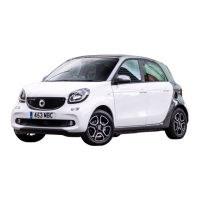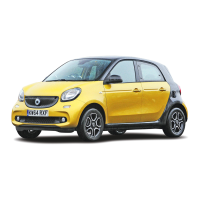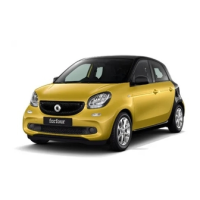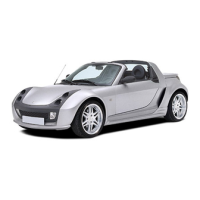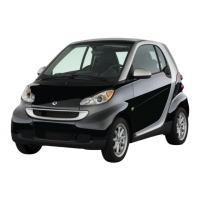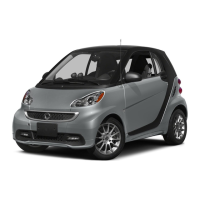To charge the battery, a battery charger rec-
ommended by smart can be connected.
If the vehicle is unused for an extended
period, the battery should be inspected fre-
quently or disconnected in a qualified spe-
cialist workshop.
A battery charger adapted and approved by
smart permits the charging of the battery in
its installed position. Further information
is available from any smart Centre.
Towing and tow-starting the vehicle
Please note
G
WARNING
Safety-relevant functions are restricted or
not available if:
R
the engine is not running.
R
the
brake
system or the power steering is
malfunctioning
R
the voltage supply or the vehicle's elec-
trical system is malfunctioning.
If your vehicle is towed, significantly
greater force may be required to steer the
vehicle or to brake. There is a risk of an
accident.
In such circumstances, use a towing bar.
Make sure that the steering is moving
freely before towing.
G
WARNING
If the steering wheel lock is engaged, the
vehicle
can
no longer be steered. There is a
risk of an accident.
Always switch on the ignition when towing
with a tow rope or a towing bar.
G
WARNING
When towing or tow-starting another vehi-
cle and its weight is greater than the per-
missible
gross
weight of your vehicle, the:
R
towing eye may be torn off
R
car/trailer combination may swerve or
even overturn
There is a risk of an accident.
When towing or tow-starting another vehi-
cle, its weight should not be greater than
the permissible
gross weight of your vehi-
cle.
Information on your vehicle's allowable gross
mass can be found on the vehicle identifica-
tion plate (Y page 182).
!
Observe the following points when towing
with a tow rope:
R
secure the tow rope on the same side on
both vehicles.
R
make sure that the tow rope is not longer
than legally permitted. Mark the tow rope
in the middle, e.g. with a white cloth
(30 x 30 cm). This makes other road users
aware that a vehicle is being towed.
R
only secure the tow rope to the towing
eye.
R
observe the brake lamps of the towing
vehicle while driving. Always maintain a
distance so that the tow rope does not
sag.
R
do not use steel cables or chains to tow
your vehicle. You could otherwise dam-
age the vehicle.
!
Do not use the towing eyes for recovery
purposes as this could damage the vehicle.
If in doubt, recover the vehicle with a
crane.
!
Pull away smoothly when towing away or
tow-starting a vehicle. If the tractive
power is too high, the vehicles could be
damaged.
!
You may tow the vehicle for a maximum of
50km. A towing speed of 50 km/h must not be
exceeded.
For towing distances over 50 km, the entire
vehicle must be lifted up and transported.
Observe the legal requirements in the rele-
vant countries for towing and tow-starting.
Preference should be given to transporting
rather than towing.
Vehicles with automatic transmission: when
being towed, the transmission must be in
position N.
i
Before the vehicle is towed, switch off the
automatic locking feature. Drivers could
Towing and tow-starting the vehicle
151
>> Handling accidents/breakdowns.
Z
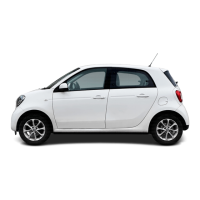
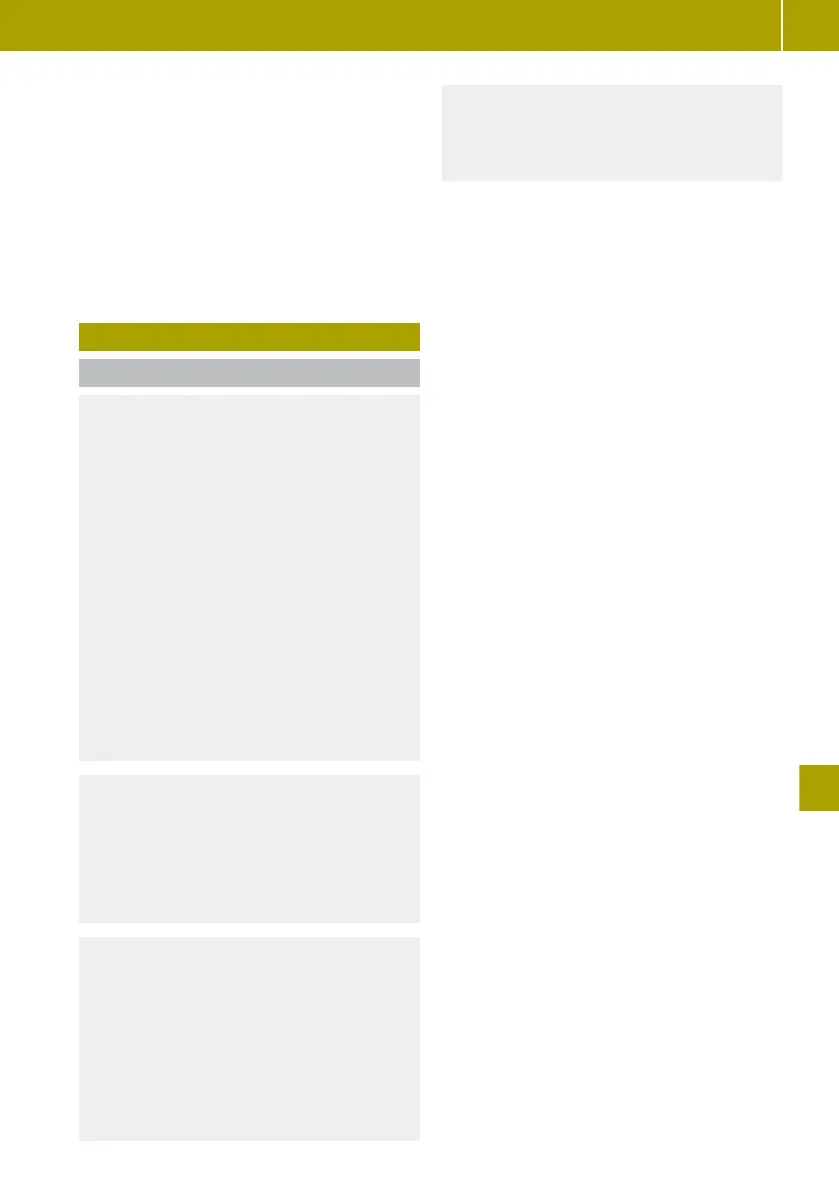